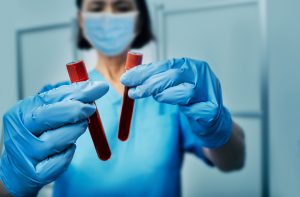Can mouthwash help remove bad breath? The simple answer is yes, it can help with bad breath. But there are other factors involved in the process that you should be aware of.
What is Mouthwash?
Mouthwash is a form of liquid that is used to help fight plaque, cavities, and bad breath. It is taken by placing a certain amount in your mouth and swooshing or gargling within your mouth and then spitting it out. Mouthwash has been around for centuries, dating as far back as the Greeks. It actually goes as far back as the Romans, but you really don’t want to know what they used for mouthwash. It was a process in which individuals would remove germs and bacteria from the mouth and is still being used today, but with newer and better ingredients.
What Causes Bad Breath?
Bad breath is caused primarily by bacteria forming within your mouth. It is medically known as halitosis. The primary cause of bad breath is food remains trapped within your teeth from lack of brushing and flossing.
Other symptoms that can lead to bad breath are:
- Tobacco Products
- Overall poor dental care
- Improper cleaning of denture products
- Your diet
- Certain odor-causing foods like garlic or onions
- Certain health conditions and diseases
Does Mouthwash Help Rid of Bad Breath?
There are two types of mouthwash on the market, cosmetic and therapeutic. Cosmetic items lack the ingredients that can help fight bacteria and in turn, can be temporary solutions to fighting bad breath.
Then there are therapeutic mouthwashes like ACT Anticavity Zero that contain ingredients that help fight bad breath.
- cetylpyridinium chloride
- chlorhexidine
- essential oils
- fluoride
- peroxide
But even with therapeutic mouthwashes, it should not be seen as a one-time fix for bad breath. It needs to become a regular hygiene routine with brushing and flossing your teeth. Mouthwash alone can not solve bad breath, but it can be an added resource to fighting it.
How Does Mouthwash Fight Bad Breath?
Here is the scientific explanation of how mouthwash actually fights bad breath.
Mouthwash acts to combat bad breath by utilizing a number of antimicrobial compounds that can destroy the halitosis-causing bacteria.
Cetylpyridinium chloride (CPC), a typical component in mouthwash, functions as a broad-spectrum antibacterial agent, which means it may eliminate a variety of microorganisms. In order to cause bacteria to leak and eventually perish, CPC damages their cell membrane. With fewer germs in the mouth, it may be possible to improve breath quality and lower the risk of plaque and gingivitis.
Chlorhexidine, a potent antibacterial agent that can eliminate a variety of germs and viruses, is a popular ingredient in mouthwash. By attaching to the bacterial cell membrane, chlorhexidine kills the bacteria by causing the membrane to become unstable. This component may aid in lowering oral bacterial levels, which may improve breath freshening and lower the risk of plaque and gingivitis.
Another typical component of mouthwash is fluoride, which can help strengthen teeth and lower the risk of tooth decay. Fluoride strengthens the tooth structure by integrating into it, increasing its resistance to acid assaults from bacteria and other causes. This can lessen the chance of developing cavities and enhance general oral health.
Some mouthwash brands additionally contain hydrogen peroxide, a mild antiseptic that aids in removing bacteria and plaque. Hydrogen peroxide helps eliminate bacteria and freshen breath by dissolving into oxygen and water when it comes into touch with live tissue.
What Mouthwash Is Best for Bad Breath?
A variety of mouthwashes, including those containing fluoride and antimicrobial chemicals can help with bad breath. TheraBreath, Listerine, and Crest Pro-Health are a few well-known mouthwashes for bad breath. Additionally, it’s critical to practice proper oral hygiene by brushing and flossing frequently, visiting the dentist for routine examinations and cleanings, and avoiding foods like alcohol, tobacco, and some particular foods that might contribute to bad breath.


